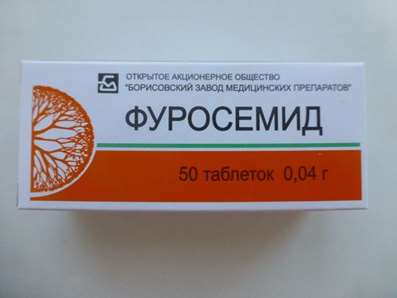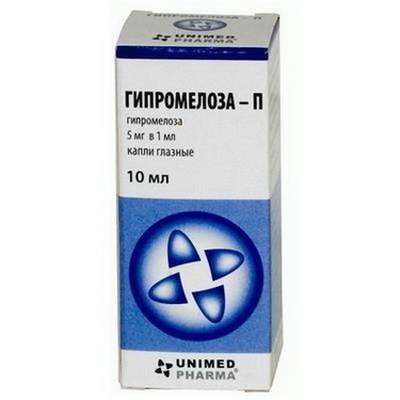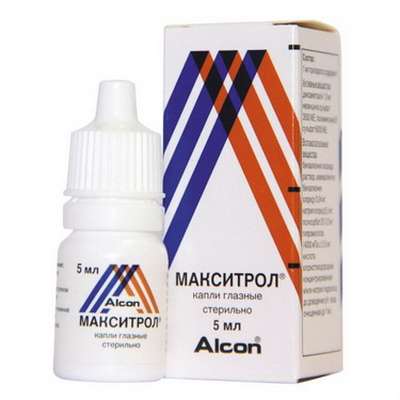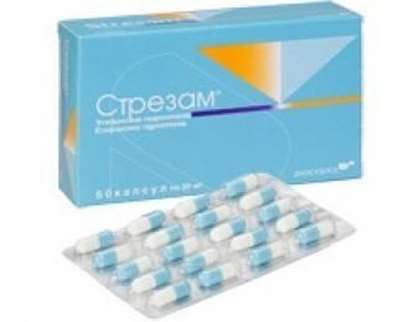Instruction for use: Proxymetacaine
I want this, give me price
Latin name of substance Proxymetacaine
Proxymetacainum (genus. Proxymetacaini)
Chemical name
3-Amino-4-propoxybenzoic acid 2- (diethylamino) ethyl ester (as hydrochloride)
Gross formula
C16H26N2O3
Pharmacological groups:
Local Anesthetics
Ophthalmic products
The nosological classification (ICD-10)
Z01.0 Examination of eyes and eyesight: Angioscopy of the vascular fundus of the fundus; Angioscopy of the iris; Diagnostic scrapings of the conjunctiva; Ultrasound of the eye; Pupil dilated
Z100.0 * Anesthesiology and premedication: Abdominal surgery; Adenomectomy; Amputation; Angioplasty of the coronary arteries; Carotid artery angioplasty; Antiseptic treatment of skin in wounds; Antiseptic treatment of hands; Appendectomy; Atheroctomy; Balloon coronary angioplasty; Vaginal hysterectomy; Venous bypass; Interventions on the vagina and cervix; Interventions on the bladder; Interference in the oral cavity; Reconstructive-reconstructive operations; Hand hygiene of medical personnel; Gynecological Surgery; Gynecological interventions; Gynecological operations; Hypovolemic shock during surgery; Disinfection of purulent wounds; Disinfection of the edges of wounds; Diagnostic Interventions; Diagnostic procedures; Diathermocoagulation of the cervix; Long-term surgeries; Replacement of fistulous catheters; Infection in orthopedic surgical interventions; Artificial heart valve; Kistectomy; Short-term outpatient surgery; Short-term operations; Short-term surgical procedures; Cryotyreotomy; Blood loss during surgical interventions; Bleeding during surgery and in the postoperative period; Kuldotsentez; Laser coagulation; Laserocoagulation; Laser retinopathy of the retina; Laparoscopy; Laparoscopy in gynecology; Likvornaya fistula; Small gynecological operations; Small surgical interventions; Mastectomy and subsequent plastic surgery; Mediastinotomy; Microsurgical operations on the ear; Mukinging operations; Suturing; Minor surgery; Neurosurgical operation; Eclipse of the eyeball in ophthalmic surgery Orchiectomy; Pancreatectomy; Pericardectomy; The rehabilitation period after surgical operations; Reconvalence after surgical intervention; Percutaneous transluminal coronary angioplasty; Pleural Thoracocentesis; Pneumonia postoperative and post traumatic; Preparing for surgical procedures; Preparing for a surgical operation; Preparation of the surgeon's arms before surgery; Preparation of the colon for surgical interventions; Postoperative aspiration pneumonia in neurosurgical and thoracic operations; Postoperative nausea; Postoperative hemorrhage; Postoperative granuloma; Postoperative shock; Early postoperative period; Myocardial revascularization; Resection of the apex of the tooth root; Resection of the stomach; Bowel resection; Resection of the uterus; Liver resection; Small bowel resection; Resection of a part of the stomach; Reocclusion of the operated vessel; Gluing of tissues during surgical interventions; Suture removal; Condition after eye surgery; Condition after surgery; Condition after surgery in the nasal cavity;Condition after gastrectomy; Condition after resection of the small intestine; Condition after tonsillectomy; Condition after removal of duodenum; Condition after phlebectomy; Vascular Surgery; Splenectomy; Sterilization of surgical instrument; Sterilization of surgical instruments; Sternotomy; Dental surgery; Dental intervention on periodontal tissues; Strumectomy; Tonsillectomy; Thoracic surgery; Total gastrectomy; Transdermal intravascular coronary angioplasty; Transurethral resection; Turbinectomy; Removal of a tooth; Cataract removal; Removing Cysts; Removal of tonsils; Removal of myoma; Removal of mobile milk teeth; Removal of polyps; Removal of a broken tooth; Removal of the uterus; Removal of seams; Urethrotomy; Fistula of the luminal ducts; Frontoetmoidohaimorotomy; Surgical infection; Surgical treatment of chronic ulcers of extremities; Surgery; Surgery in the anus; Surgery on the large intestine; Surgical practice; Surgical procedure; Surgical interventions; Surgical interventions on the digestive tract; Surgical interventions on the urinary tract;Surgical interventions on the urinary system; Surgical interventions on the genitourinary system; Surgical intervention on the heart; Surgical procedures; Surgical operations; Surgical operations on veins; Surgical intervention; Vascular; Cholecystectomy; Partial resection of the stomach; Extraperitoneal hysterectomy; Percutaneous transluminal coronary angioplasty; Percutaneous transluminal angioplasty; Coronary artery bypass grafting; Extirpation of the tooth; Extirpation of infant teeth; Extirpation of pulp; Extracorporeal circulation; Extraction of the tooth; Extraction of teeth; Extraction of cataracts; Electrocoagulation; Endourological interventions; Episiotomy; Ethmoidotomy; Complications after tooth extraction
Z40 Preventive Surgery: Inhalational Anesthesia; Intratracheal Intubation; Intubation of the trachea; Surface anesthesia in ophthalmology
CAS code
499-67-2
Characteristics of Proxymetacaine
Local anesthetic from the group of esters for use in ophthalmology.
Proxymethacaine hydrochloride (proparacaine hydrochloride) is soluble in water, warm ethyl alcohol, methanol. Insoluble in ether, benzene. Solutions have a neutral reaction. pKa = 3.2. Molecular weight is 330.86.
Pharmacology
Pharmacological action - local anesthetic.
Reduces the permeability of the lipid layer of the nerve cell membrane for sodium ions, inhibits membrane depolarization, increases the threshold of electrical excitability of nerve endings, prevents the occurrence of an action potential, blocks the perception and conduction of a nerve impulse along the fiber.
After instillation into the eye, it is rapidly absorbed through the conjunctival capillaries. It is hydrolyzed by plasma esterases, excreted by the kidneys in the form of inactive cleavage products. With a single instillation, the anesthetic effect is manifested after 30 seconds and remains for at least 15 minutes.
Long-term toxic effects are currently unknown. With prolonged use, it is possible to slow the healing of ophthalmic lesions.
Long-term animal studies to assess potential carcinogenic and mutagenic effects, effects on reproductive function and fertility have not been carried out.
Application of the substance Proxymetacaine
Local anesthesia in ophthalmology for diagnostic and treatment procedures requiring fast and short-term anesthesia: surgical intervention for cataracts, surgeries for suture removal from the cornea or conjunctiva; tonometry, gonioscopy; removal of a foreign body from the cornea; diagnostic scrapings with conjunctiva.
Contraindications
Hypersensitivity.
Update of information
Carefully
Assign with caution to patients with allergic reactions, epilepsy, heart disease, hyperthyroidism and breathing disorders; patients with myasthenia gravis, patients with low acetylcholinesterase in plasma, as well as patients undergoing treatment with cholinesterase inhibitors (because they are more at risk of systemic adverse reactions).
Restrictions on the use
Pregnancy, breast-feeding, children's age (safety and effectiveness of use in children are not defined).
Application in pregnancy and lactation
When pregnancy is possible, if the expected effect during application exceeds the potential risk to the fetus (adequate and strictly controlled studies in humans have not been performed).
With caution in the period of breastfeeding (no data on penetration into breast milk).
Side effects of the substance Proxymethacaine
Itching, burning and congestion hyperemia (1-10%); irritation, tingling, burning, reddening of the cornea, lacrimation, increased blinking - after instillation, sometimes signs of local irritation or increased blinking may appear a few hours after instillation; allergic reactions, incl. contact (dermatitis, dryness and skin cracks at the fingertips), pupil dilated, cycloplegic effects, edema and erosion of the corneal epithelium, conjunctival hemorrhage.
In 0.1-1% of cases, immediately after instillation - severe reactions of the hyperallergic type (acute epithelial keratitis, necrosis of the epithelium, threadlike infiltrates of the cornea, iritis with descemetite).
With prolonged use - infection and / or opacity of the cornea, prolonged loss of vision; perforation of the cornea.
Systemic intoxication (0.01-0.1%) - is manifested by CNS excitation with its subsequent inhibition.
Overdose
Treatment: Wash the excess preparation from the eye with warm water. When there are signs of systemic action - symptomatic treatment.
Routes of administration
Locally.
Precautions for the substance Proxymethacaine
It is intended for local use only. Long-term use can cause persistent opacity of the cornea, accompanied by loss of vision. Use with caution in patients with a tendency to allergic reactions, with heart disease, with hyperthyroidism.
It is necessary during the entire period of anesthesia to protect the eye from the ingress of irritating chemicals and foreign bodies. Patients should be warned that you can not touch and rub the eye until the anesthetic effect passes (due to lack of sensitivity, damage may occur).

 Cart
Cart





